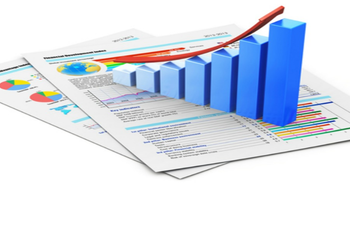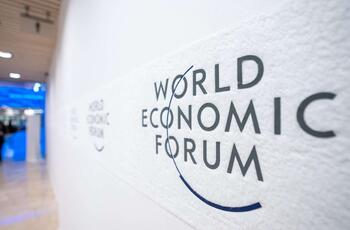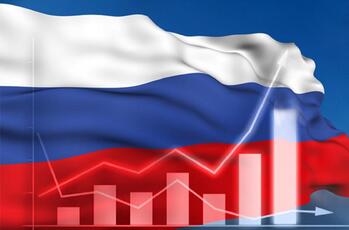
The impacts and consequences of rouble appreciation
A prominent feature of Russia’s economic situation over recent years is steady import growth (15–30 % per year in volume terms), which has consistently surpassed domestic production (4–12 % per year). Strong import growth and the rouble’s ongoing appreciation in real terms pose a major challenge to domestic producers. In particular, the recent dynamics of auto sales in Russia shows that the price differential between domestic models and western imports, after adjusting for the higher quality of the latter, is close to zero.
At the macro-level, several exchange-rate measures suggest the rouble is now close to what is referred to in the literature as “the equilibrium level.” For example, according to the real effective exchange rate index, the rouble has recovered to 99 % of its pre-1998 crisis level. Moreover, international comparison of Russia’s price level with other countries, taking into account the level of economic development, reveals the rouble is presently undervalued by only 5 %. There is now wide acceptance that the Russian currency, supported by high world commodities prices, can only appreciate further. The recently published draft of “Monetary policy guidelines for 2006” by the Central Bank of Russia states rouble appreciation could be as much as 9 % next year.
Industry-level impacts of rouble appreciation
As the rouble moves from under- into over-valuation territory, it is important to realise that the exchange-rate level, rather than the rate of appreciation, has increasingly become the main determinant of competitive pressure on domestic enterprises. This shift raises the issue of the exchange rate’s impact at the industry level. In January 2005, the Institute for Complex Strategic Studies (ICSS), in cooperation with the Institute for the Economy in Transition (IET), conducted a survey of Russian manufacturing enterprises. The main aim of the ICSS-IET survey was to assess the possible impact of rouble appreciation and the exchange-rate level at the microlevel.
The survey results indicate the exchange rate is an important indicator for domestic producers. Part of this undoubtedly reflects the rapid import expansion of recent years. As predicted by theoretical models of the exchange rate’s impact on enterprises, greater import penetration into domestic markets raises the sensitivity of Russian producers to exchange rates. When asked to give a preferable exchange rate (amount of roubles per US dollar) only a third of respondents said rouble depreciation was needed if imports represented less than 25 % of their market. However, 47 % of firms in more import-oriented markets selected this option.
Exchange-rate pressure can differ from one branch of industry to another. To capture changes in industry competitiveness induced by currency movements, industrial real-exchange-rate indexes for Russia were constructed. In 2003– 2004, a period of rapid rouble appreciation against US dollar (16 % per year in real terms), the most significant appreciation at the industry level was observed for the light manufacturing sector, which competes with products from dollarpegged economies such as China. As appreciation of the rouble against the euro picked up in 2005, the exchange rate pressure shifted to the chemical industry, which competes primarily with imports from the euro area. The ICSS-IET survey showed that the responses of enterprises on the profitability and sales reduction in 2004 were positively correlated with the appreciation of industrial exchange rates.
Need for real adjustment at the enterprise level
The consequences of fighting inflation with rouble appreciation can be damaging to the Russian economy. As a rule, enterprises last year tended to reduce prices in markets where the estimated import share was relatively high (over 50 %). Thus, inflation can be reduced with the help of exchange-rate appreciation only at the expense of further loss of market share of domestic producers.
Since import growth and rouble appreciation in real terms have remained strong in 2005, it is important to estimate the potential response of Russia’s industrial sector to rising competitive pressures. When asked how they plan to compete with import products, most firms mentioned quality enhancement (63 % of firms surveyed). However, only 25 % of domestic producers said they planned to create new products in response to competition from imports. Notably, the decision by domestic firms to create new products was not dependent on import penetration. This suggests that any opportunity for stimulating innovation through import competition is probably quite limited.
Maintaining the competitiveness of domestic producers requires capital-intensive measures such as quality enhancement and product range differentiation. However, as the majority of small and medium-sized enterprises face shrinking profitability and limited access to credit financing, opportunities for new investment are scarce. At the same time, 54 % of surveyed firms indicated that a reduction in labour costs was needed to maintain price competitiveness. Consequently, import growth and rouble appreciation may lead to efficiency-enhancing adjustments by Russian enterprises at the expense of increased uncertainty for workers.








